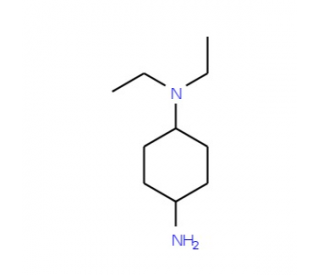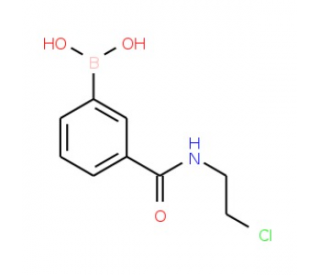详细说明
Species Reactivity
Human
Specificity
Detects human CD44 in direct ELISAs and Western blots. In direct ELISAs, no cross-reactivity with recombinant CD44 from mouse, rat, or pig is observed.
Source
Monoclonal Mouse IgG2a Clone # 691534
Immunogen
Mouse myeloma cell line NS0-derived recombinant human CD44s
Gln21-Pro220
Accession # P16070Formulation
Supplied 0.2 mg/mL in a saline solution containing BSA and Sodium Azide.
Label
Alexa Fluor 594
Applications
Recommended
ConcentrationSample
Flow Cytometry
0.25-1 µg/10 6 cells
Human peripheral blood lymphocytes
Please Note: Optimal dilutions should be determined by each laboratory for each application. are available in the Technical Information section on our website.
Preparation and Storage
Shipping
The product is shipped with polar packs. Upon receipt, store it immediately at the temperature recommended below.
Stability & Storage
Store the unopened product at 2 - 8 °C. Do not use past expiration date.
Background: CD44
CD44 is a ubiquitously expressed protein that is the major receptor for hyaluronan and exerts control over cell growth and migration (1‑3). Human CD44 has a 20 amino acid (aa) signal sequence, an extracellular domain (ECD) with a 100 aa hyaluronan-binding disulfide-stabilized link region and a 325‑530 aa stem region, a 21 aa transmembrane domain, and a 72 aa cytoplasmic domain. Within the stem, ten variably spliced exons (v1‑10, exons 6‑15) produce multiple protein isoforms (1‑3). The standard or hematopoietic form, CD44s or CD44H, does not include the variable segments (1‑3). Cancer aggressiveness and T cell activation have been correlated with expression of specific isoforms (1, 3). With variable N- and O-glycosylation and splicing within the stalk, CD44 can range from 80 to 200 kDa (1). Within the N‑terminal invariant portion of the ECD (aa 21‑220), human CD44 shares 76%, 76%, 86%, 83% and 79% identity with corresponding mouse, rat, equine, canine and bovine CD44, respectively. The many reported functions of CD44 fall within three categories (1). First, CD44 binds hyaluronan and other ligands within the extracellular matrix and can function as a “platform” for growth factors and metalloproteinases. Second, CD44 can function as a co‑receptor that modifies activity of receptors including MET and the ERBB family of tyrosine kinases. Third, the CD44 intracellular domain links the plasma membrane to the actin cytoskeleton via the ERM proteins, ezrin, radixin and moesin. CD44 can be synthesized in a soluble form (4) or may be cleaved at multiple sites by either membrane-type matrix metalloproteinases, or ADAM proteases to produce soluble ectodomains (5, 6). The cellular portion may then undergo gamma secretase-dependent intramembrane cleavage to form an A beta -like transmembrane portion and a cytoplasmic signaling portion that affects gene expression (7, 8). These cleavage events are thought to promote metastasis by enhancing tumor cell motility and growth (1, 5).
References:
Ponta, H. et al. (2003) Nat. Rev. Mol. Cell Biol. 4:33.
Screaton, G.R. et al. (1992) Proc. Natl. Acad. Sci. USA 89:12160.
Lynch, K.W. (2004) Nat. Rev. Immunol. 4:931.
Yu, Q. and B.P. Toole (1996) J. Biol. Chem. 271:20603.
Nagano, O. and H. Saya (2004) Cancer Sci. 95:930.
Nakamura, H. et al. (2004) Cancer Res. 64:876.
Murakami, D. et al. (2003) Oncogene 22:1511.
Lammich, S. et al. (2002) J. Biol. Chem. 277:44754.
Entrez Gene IDs:
960 (Human); 12505 (Mouse); 25406 (Rat); 100126860 (Porcine)
Alternate Names:
CD44 antigen; CD44 molecule (Indian blood group); CD44; CD44R; CDw44; cell surface glycoprotein CD44; chondroitin sulfate proteoglycan 8; CSPG8; ECMR-III; epican; Extracellular matrix receptor III; GP90 lymphocyte homing/adhesion receptor; HCAM; HCELL; hematopoietic cell E- and L-selectin ligand; Heparan sulfate proteoglycan; Hermes antigen; homing function and Indian blood group system; HUTCH-I; Hyaluronate receptor; IN; LHR; MC56; MDU2; MDU2CD44 antigen (homing function and Indian blood group system); MDU3; MDU3CDW44; MIC4; MIC4MGC10468; MUTCH-I; Pgp1; PGP-1; PGP-I; Phagocytic glycoprotein 1; Phagocytic glycoprotein I










 粤公网安备44196802000105号
粤公网安备44196802000105号